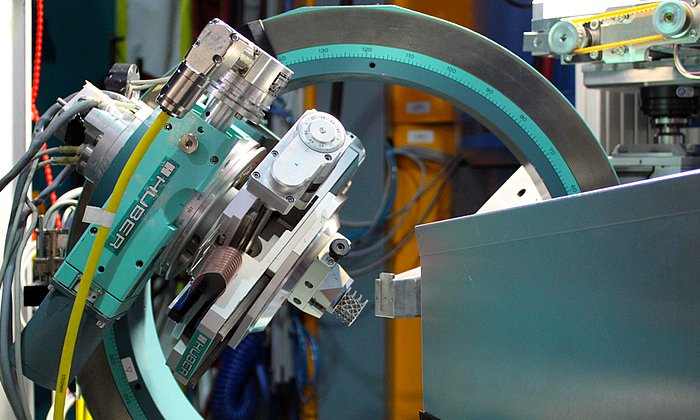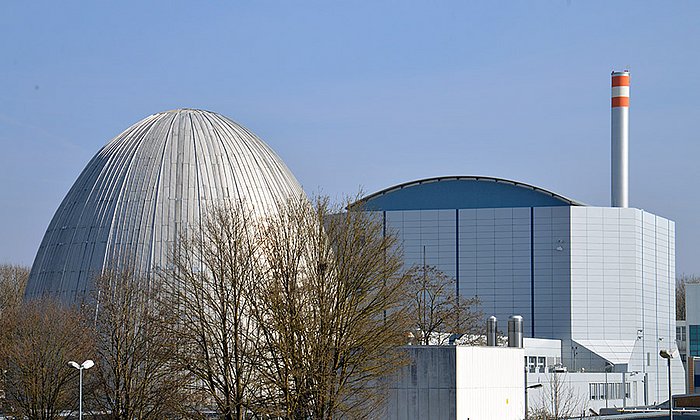Investigations at Research Neutron Source lead to discovery of a previously unknown animal species
Neutrons help track down Mammalian Ancestors

A long snout, a massive jaw and sharp teeth – these are some features of the newly discovered species Tessellatia bonapartei. It belongs to the group of Cynodontia (which literally translates to “dog teeth”), mammal-like animals from which mammals eventually evolved.
Argentinian researchers found the bones of the roughly mouse-sized cynodont species in the desert-like Talampaya National Park in the west of Argentina. “The bones were very fragile and therefore it was not possible to remove the surrounding rock without risking to damage them”, explains Dr. Aureliano Tartaglione of the research neutron source Heinz Maier-Leibnitz at TUM. He worked on the project with Dr. Leandro Gaetano from CONICET (National Scientific and Technical Research Council in Argentina).
Clear images thanks to neutrons
The researchers first performed X-ray imaging to get a look at the bones. However, due to the high iron content of the petrified soil, the fossilized bones could hardly be distinguished from the surrounding earth in the X-ray images. For neutrons, in contrast, iron is no problem at all. Therefore, the researchers used neutron tomography at the RA-6 facility of the Comisión Nacional de Energía Atómica in Argentina.
RA-6's thermal neutrons produced promising images, but with low spatial resolution. Therefore, the researchers continued their analysis at ANTARES, an instrument at the research neutron source in Garching, Germany. “Here we have much better contrast using cold neutrons with a longer wavelength. Moreover, ANTARES offers higher spatial resolution”, Tartaglione explains.

Whiskers and a massive jaw
It was only thanks to the high resolution of ANTARES that the paleontologists determined that the excavated bones belonged to a previously unknown species. “This was a big surprise for us”, says Tartaglione. “After all, cynodonts are globally very scarce during that particular period of the Triassic, the Norian". The newly discovered species, Tessellatia bonapartei, was named after leading Argentinian scientist Dr. José F. Bonaparte.
In Tessellatia bonapartei, the researchers found features that were not present in other findings. Surprisingly, the specimen had a greatly differing number of teeth in the upper and lower jaws, as well as a very massive lower jaw. In contrast to all previous cynodont specimens found, there is a space in the lower jaw external to the tooth row. The new specimen also had another distinctive feature: a canal in the upper jaw. When the animal was still alive, this canal was traversed by nerves. The characteristics of this canal suggest that Tessellatia bonapartei, like many of today's mammals, had whiskers.
One step closer to unravelling the mystery of the origins of mammals
The new species adds new information to the evolutionary tree of cynodonts. With this new knowledge, researchers can understand better the evolution of mammals by reconstructing evolutionary steps – like the development of whiskers – in the evolutionary tree through comparison with closely-related species as well as with others belonging to more distant branches. The results also confirm the theory that mammals originated in what is now the south of Brazil. The finding thus takes researchers one step closer to unravelling the mystery of the origins of mammals.
L.C. Gaetano, F. Abdala, F.D. Seoane, A. Tartaglione, M. Schulz, A. Otero, J. M. Leardi, C. Apaldetti, V. Krapovickas, E. Steimbach A new cynodont from the Upper Triassic Los Colorados Formation (Argentina, South America) reveals a novel paleobiogeographic context for mammalian ancestors. Sci Rep 12, 6451 (2022). doi.org/10.1038/s41598-022-10486-4
-
The experiments were conducted by Comisión Nacional de Energía Atómica, San Carlos de Bariloche, Argentina, at the RA-6 facility (CNEA) and the company Y-TEC as well as at ANTARES, an instrument operated by FRM II at the Heinz Maier-Leibnitz Zentrum (MLZ), Garching, Germany.
-
The researchers work at the Technical University of Munich, Consejo Nacional de Investigaciones Científicas y Técnicas (Instituto de Estudios Andinos “Don Pablo Groeber”, Universidad Nacional de La Plata, and Universidad Nacional de San Juan), Universidad de Buenos Aires, and Laboratorio Argentino de Haces de Neutrones in Argentina and the University of the Witwatersrand in Johannesburg, South Africa.
-
The research was partly funded by Agencia Nacional de Promoción Científica y Tecnológica, Consejo Nacional de Investigaciones Científicas y Técnicas, Sepkosky Grant and The Explorers Club Grant.
Technical University of Munich
Corporate Communications Center
- CCC / Elene Mamaladze
- presse@tum.de
- Teamwebsite
Contacts to this article:
Dr. Aureliano Tartaglione
Technical University of Munich
Research Neutron Source Heinz Maier-Leibnitz (FRM II) and
Heinz Maier-Leibnitz Zentrum (MLZ)
+49 89 289 12106
aureliano.tartaglione@frm2.tum.de




